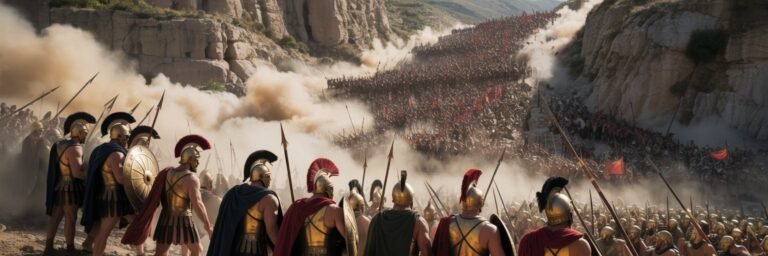INTRODUCTION
As we delve into the annals of history, we explore a chapter molded with iron, bronze, stone, and deadly tactics: weapons and warfare of ancient civilizations. Today, in a world of drone warfare and smart-bombs, our past weaponry might seem a rudimentary precursor. However, the ancient battleground was a canvas of ingenuity, innovation, and sometimes bewildering surprises. Each tapestry of history featuring war was uniquely woven: from the horsed Hittite chariots to the elephant-mounted warfare of the Punic Wars and the insidious guerilla tactics of the Hebrews. Through this fusion of archaeology, anthropology, and history, we seek to unearth the implications of their warfare technologies and theorists.
HISTORICAL BACKGROUND
Weapons trace the roots of their existence to prehistoric times when Homo habilis were using tools made of lava. Stone, bone, and wood serving the dual purpose of hunting and protection paved the way for more refined weapons like spears with flint tips for Neanderthals. Then emerged more advanced early humans who mastered fire, fashioned more advanced tools, and ultimately ushered in the Bronze Age, a breakthrough period in weapon technology.
The facelift in weapon evolution is apparent in ancient Egypt around 3500 BCE. Archers with bows made from sinew and animal horn were common. Bronze casting facilitated the birth of swords, well-crafted battle axes, and the Khopesh, a sickle-shaped sword that became a popular symbol of royal power.
The battle scene in Ancient Greece was dominated by heavily armored Hoplites carrying spears, swords, and large, round protective shields. Arranged in a formation known as the phalanx, they presented an impenetrable wall of spears and shields.
Understanding weapons from antiquity compels us to tread the bloody trails of conflict and conquest.
THEORIES AND INTERPRETATIONS
Every weapon from antiquity tells a unique story woven into its time, culture, and purpose. Scholars chart the evolution of warfare through studying archaeological findings, ancient texts, and anthropological interpretations.
As per historian Robert Drews’ controversial “Catastrophe Theory,” larger, cheaper iron weapons led to the Late Bronze Age collapse. Alternatively, Walter Burkert theorized it as a conflict borne out of the migration of warrior-like Greeks into an increasingly fragile Aegean and East Mediterranean socio-political climate.
Further east, Sun Tzu’s “Art of War” added credence to his theory that strategy, subterfuge, and psychological manipulation outweighed the physical might of an army. His concepts of espionage, tactical withdrawal, and using enemy’s strength against themselves perhaps explain how smaller Chinese states resisted larger ones.
MYSTERIES AND CONTROVERSIES
The pages of ancient warfare are smeared with blood and questions. Why did the Greeks, fearlessly frontal in battle, adopt the more defensive phalanx? Why did the Roman Republic, with a militia resembling a Greek phalanx, transition into the mighty professional legions of the Empire?
More controversial is the origins and use of Greek fire. Was it merely petroleum-based as accounts suggest, or was it a compound involving quicklime, making it react vehemently with water?
Was the Bronze Age fraction of weaponry limited due to a shortage of tin, a key component for bronze? This theory runs parallel with V. Gordon Childe in the “Oxford Journal of Archaeology” implying changes in warfare brought more societal than technological modifications.
SYMBOLISM AND CULTURAL SIGNIFICANCE
Weapons served more than just a practical purpose in ancient civilizations. They were symbolic; reflecting social status, cultural values, or religious beliefs. Celtic warriors, for instance, were buried with their weapons, viewing them as extensions of the individual’s persona, similar to Samurai and their Katana in feudal Japan.
Studying ancient Egyptian hieroglyphics, weapons like the Khopesh, Mace, and Spear signified authority, the power of the Pharaoh, and the mighty hand of their gods.
In Ancient Greece, owning a set of bronze Hoplite armor was a reflection of wealth and influence. It portrayed the willingness of citizens to protect their city-state, a critical cultural value of their polis-centric society.
MODERN INVESTIGATIONS
Modern archaeology and technology continue to unveil secrets about ancient weapons and warfare. Advanced imaging techniques like LIDAR have discovered ancient fortresses and battle sites, allowing us to understand combat layout more accurately.
Experimental archaeology, through faithful weapon reproductions, presents hands-on insights into their effectiveness, usage, and craftsmanship. Ongoing research on metallurgical analyses of Bronze Age artifacts continues to redress our understanding of weapon production, trade routes, and the socio-political dynamics.
LEGACY AND CONCLUSION
Wars may wipe out civilizations, but the weapons they leave behind narrate their story. Their battles marked an epoch of human history that, sometimes destructively, lead to the expansion of empires, cultural exchanges, and technological advancements.
Today, while most wars are fought from computer screens, the philosophical foundations of strategy, deterrence, and diplomacy from the ancients stubbornly linger. Through a modern lens, we study the use, manufacture, and cultural significance of ancient weapons not only as a shadow of our aggressive past but as milestones in human innovation, survival, and the eternal struggle for power.
In the silent relics of these weapons and the echoes of ancient battles, we find not only their will to conquer, but also the indomitable human spirit emerging against the backdrop of survival, ingenuity, and courage – lessons that, regardless of the passage of time, continue to resonate.






